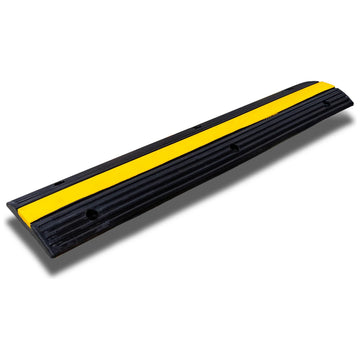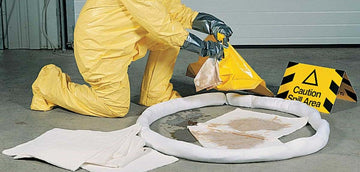In industries where liquids such as chemicals, oils, or hazardous materials are frequently handled, spill containment is a top priority. One effective method for managing spills and preventing environmental contamination is rubber bunding. But what exactly is rubber bunding, and how does it contribute to spill containment? Let’s explore this essential spill management tool.
What is Rubber Bunding?
Rubber bunding is a durable, raised barrier typically made of high-grade rubber. It is installed on floors to create a containment area that prevents liquids from spreading beyond a designated space. Rubber bunds act as a physical boundary, keeping spills contained and making cleanup more efficient.
These bunds are commonly used in facilities where liquids are stored, transferred, or used, such as:
- Warehouses
- Factories
- Workshops
- Fuel depots
- Laboratories
Key Features of Rubber Bunding
Rubber bunding is specifically designed for spill containment and offers several benefits:
- Durability: Made from robust rubber materials, bunds can withstand heavy loads, harsh chemicals, and regular foot or vehicle traffic.
- Flexibility: Rubber bunding can be cut and shaped to fit any layout, from straight edges to curved pathways.
- Chemical Resistance: It’s designed to resist damage from oils, fuels, and various chemicals, ensuring long-term functionality.
- Ease of Installation: Rubber bunding is relatively easy to install and can be adhered to most surfaces, such as concrete or tiles.
Applications of Rubber Bunding
Rubber bunding is a versatile tool with a range of applications, including:
- Spill Containment: Prevents spills from spreading across floors, reducing environmental risks and maintaining safety standards.
- Traffic Management: In some cases, rubber bunds also serve as guides or markers for vehicles and forklifts in industrial areas.
- Flood Prevention: Acts as a minor barrier against water ingress during light flooding or liquid leaks.
- Storage Zones: Creates a bunded area for hazardous materials storage, ensuring compliance with safety regulations.
How Rubber Bunding Enhances Spill Containment
Rubber bunding is especially useful in high-risk areas where spills are frequent or involve hazardous substances. By confining spills to a specific area:
- It minimizes the risk of environmental contamination.
- It reduces slip-and-fall hazards for workers.
- It simplifies spill response and cleanup.
- It ensures compliance with environmental and workplace safety regulations.
Types of Rubber Bunding
Rubber bunding comes in various designs to meet specific needs:
- Standard Bunding: Raised profiles designed for general spill containment.
- Low-Profile Bunding: Ideal for areas with heavy foot traffic or where equipment like trolleys or forklifts need to cross.
- Flexible Bunding: Suited for temporary setups or areas with irregular layouts.
Installation and Maintenance
Installing rubber bunding involves adhering it securely to the floor with industrial-grade adhesives or fasteners. Routine maintenance includes:
- Inspecting for wear and tear.
- Cleaning the bunds to remove spills or debris.
- Replacing damaged sections promptly to maintain effectiveness.
Final Thoughts
Rubber bunding is a practical, cost-effective solution for spill containment in various industries. Its ability to create a safe and controlled environment makes it an essential tool for businesses handling liquids or hazardous materials.
Investing in high-quality rubber bunding not only protects your workplace but also ensures compliance with safety and environmental regulations. If you’re looking to enhance your spill containment strategies, rubber bunding is a smart and reliable choice.
For more information or assistance in choosing the right bunding solution for your facility, feel free to contact a spill management expert!



